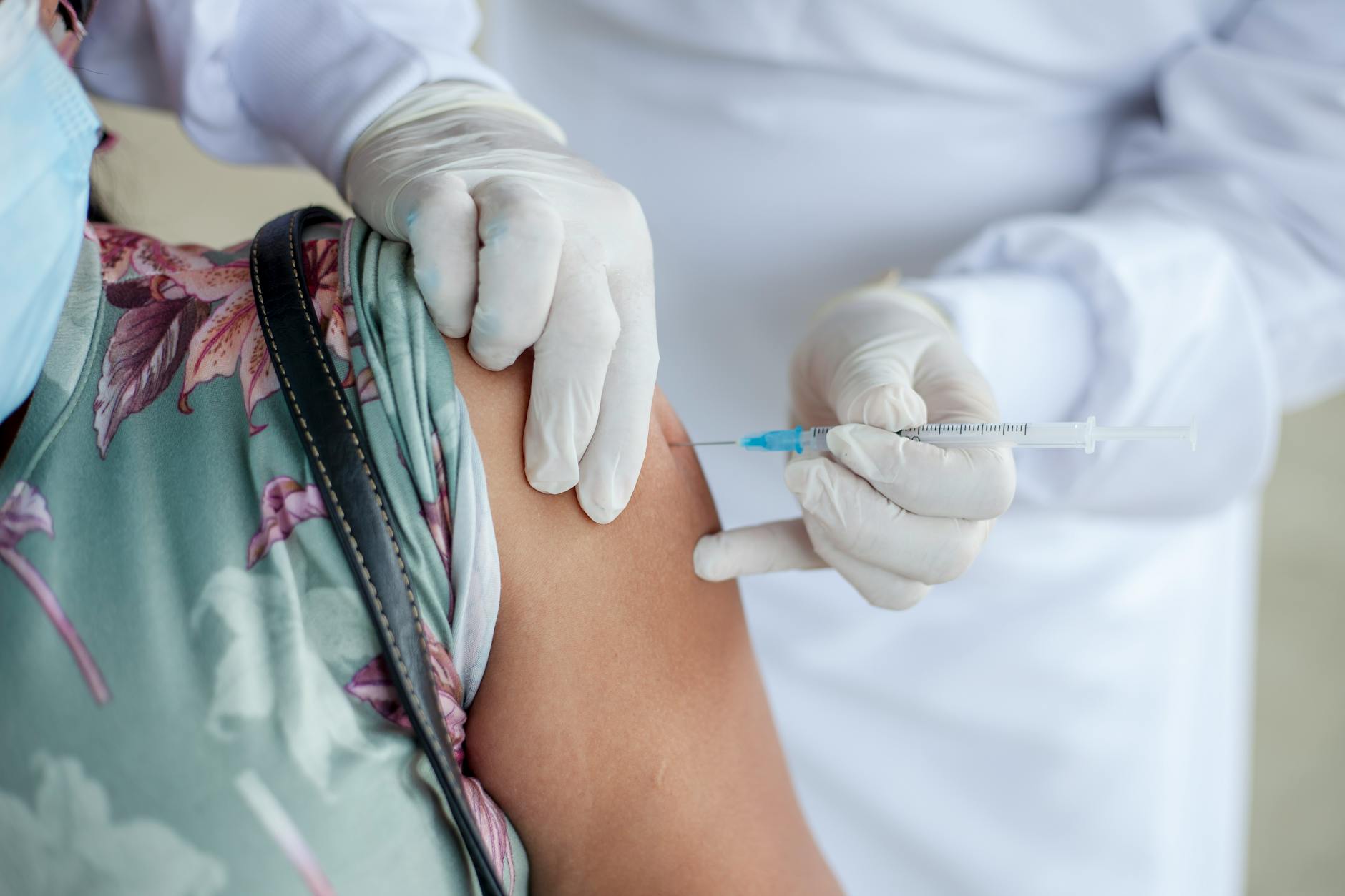Symptooms And Treatments of Whooping Caugh
Symptooms And Treatments of Whooping Caugh
While many think of whooping cough as a disease of the past, it's making an alarming comeback in recent years. This resurgence has left parents worried and healthcare professionals on high alert. But what exactly is whooping cough, and how can you protect yourself and your loved ones?
In this comprehensive guide, we'll dive deep into the world of whooping cough. From understanding its causes to recognizing its symptoms, and exploring treatment options to prevention strategies, we've got you covered. Let's embark on this journey to arm ourselves with knowledge against this persistent threat to our respiratory health.
Understanding Whooping Cough
Understanding Whooping Cough
A. Definition and cause
Whooping cough, also known as pertussis, is a highly contagious respiratory infection caused by the bacterium Bordetella pertussis. This bacterial infection affects the airways, leading to severe coughing fits that can last for weeks or even months. The distinctive "whooping" sound that gives the disease its name occurs when patients gasp for air after a coughing spell.
B. How it spreads
Whooping cough is primarily spread through airborne droplets when an infected person coughs or sneezes. The bacteria can also survive on surfaces for several days, allowing for indirect transmission. Here's a breakdown of transmission methods:
-
Direct contact with respiratory droplets
-
Indirect contact with contaminated surfaces
-
Close proximity to an infected individual
| Transmission Method | Risk Level | Prevention |
|---|---|---|
| Airborne droplets | High | Face masks, social distancing |
| Surface contact | Moderate | Hand hygiene, surface disinfection |
| Close proximity | High | Avoiding close contact with infected individuals |
C. Who is at risk
While anyone can contract whooping cough, certain groups are at higher risk for severe complications:
-
Infants and young children
-
Pregnant women, especially in the third trimester
-
Elderly individuals
-
People with weakened immune systems
-
Individuals with chronic respiratory conditions
Understanding these risk factors is crucial for implementing effective prevention strategies and early intervention. Now that we have explored the basics of whooping cough, let's delve into the specific symptoms that characterize this infection.
Recognizing Symptoms
Recognizing Symptoms
Now that we understand what whooping cough is, let's delve into how to recognize its symptoms. Whooping cough, or pertussis, progresses through distinct stages, each with its own set of symptoms.
A. Early-stage symptoms
In the initial phase, whooping cough often mimics a common cold. Symptoms may include:
-
Mild cough
-
Runny nose
-
Low-grade fever
-
Slight fatigue
These symptoms typically last for 1-2 weeks before progressing to the more severe stage.
B. Classic 'whooping' cough
The hallmark of pertussis is the intense coughing fits, characterized by:
-
Rapid, violent coughs followed by a high-pitched 'whoop' sound
-
Coughing episodes lasting up to a minute
-
Difficulty breathing during and after coughing fits
-
Vomiting after coughing
C. Symptoms in infants
Infants may experience different or more severe symptoms:
-
Apnea (brief pauses in breathing)
-
Cyanosis (turning blue or purple due to lack of oxygen)
-
Poor feeding
-
Lethargy
D. Complications in different age groups
Age plays a crucial role in the severity and potential complications of whooping cough:
| Age Group | Common Complications |
|---|---|
| Infants | Pneumonia, seizures, brain damage |
| Children | Dehydration, weight loss, fainting |
| Adults | Rib fractures, urinary incontinence |
Understanding these symptoms and potential complications is crucial for early detection and prompt treatment of whooping cough. In the next section, we'll explore how this condition is diagnosed.
Diagnosing Whooping Cough

Diagnosing Whooping Cough
Now that we've covered the symptoms, let's explore how whooping cough is diagnosed. Accurate and timely diagnosis is crucial for effective treatment and preventing the spread of this highly contagious disease.
Physical Examination
A healthcare provider will start by conducting a thorough physical examination. They will:
-
Listen to your breathing and cough
-
Check for signs of respiratory distress
-
Examine your throat and nasal passages
-
Assess your overall health condition
Laboratory Tests
To confirm the diagnosis, several laboratory tests may be performed:
| Test Type | Description | Turnaround Time |
|---|---|---|
| Nasopharyngeal Swab | Collects bacteria from the back of the throat | 2-7 days |
| Blood Test | Checks for antibodies against pertussis | 1-3 days |
| PCR Test | Detects genetic material of the bacteria | 1-2 days |
Importance of Early Detection
Early detection of whooping cough is critical for several reasons:
-
Prompt treatment initiation
-
Reduced transmission to others
-
Prevention of complications
-
Improved recovery outcomes
By identifying the disease in its early stages, healthcare providers can administer appropriate antibiotics, which are most effective when given early in the course of the illness. This not only helps manage symptoms but also limits the contagious period, protecting vulnerable individuals like infants and the elderly from exposure.
Treatment Options

Treatment Options
Now that we understand how whooping cough is diagnosed, let's explore the various treatment options available. Effective management of whooping cough involves a combination of medical interventions and supportive care.
A. Antibiotics
Antibiotics play a crucial role in treating whooping cough, especially when administered early in the course of the illness. The most commonly prescribed antibiotics include:
-
Azithromycin
-
Clarithromycin
-
Erythromycin
| Antibiotic | Duration of Treatment | Age Group |
|---|---|---|
| Azithromycin | 5 days | All ages |
| Clarithromycin | 7 days | Adults and children |
| Erythromycin | 14 days | Primarily for infants |
While antibiotics can help reduce the severity and duration of symptoms, they are most effective when given within the first few weeks of infection.
B. Supportive care at home
For milder cases, supportive care at home can help manage symptoms and promote recovery:
-
Rest and hydration
-
Use of a cool-mist humidifier
-
Avoiding irritants like smoke or strong odors
-
Small, frequent meals to prevent vomiting
C. Hospital treatment for severe cases
In severe cases, especially for infants or those with complications, hospital treatment may be necessary. This can include:
-
Intravenous fluids
-
Oxygen therapy
-
Monitoring of heart rate and breathing
D. Managing symptoms in infants and young children
Special care is needed for infants and young children with whooping cough:
-
Close monitoring of breathing and hydration
-
Suctioning of thick mucus from the nose and mouth
-
Smaller, more frequent feedings to prevent vomiting
With proper treatment and care, most individuals recover from whooping cough. Next, we'll explore strategies to prevent this highly contagious disease.
Prevention Strategies

Prevention Strategies
Preventing whooping cough is crucial, especially for vulnerable populations. Let's explore effective strategies to protect yourself and others from this highly contagious respiratory infection.
A. Vaccination Schedule
Vaccination is the most effective way to prevent whooping cough. The CDC recommends the following schedule:
| Age Group | Vaccine | Doses |
|---|---|---|
| Infants & Children | DTaP | 5 doses (2, 4, 6, 15-18 months, 4-6 years) |
| Adolescents | Tdap | 1 dose (11-12 years) |
| Adults | Tdap | 1 dose (if not received as adolescent) |
B. Booster Shots for Adults
Adults should receive a Tdap booster every 10 years to maintain immunity. This is particularly important for:
-
Healthcare workers
-
Childcare providers
-
Pregnant women (during each pregnancy)
-
Those in close contact with infants
C. Protecting Infants and High-risk Individuals
To safeguard the most vulnerable:
-
Ensure all family members and caregivers are up-to-date on vaccinations
-
Practice good hygiene, including frequent handwashing
-
Avoid exposure to individuals with respiratory symptoms
-
Consider "cocooning" - vaccinating all close contacts of newborns
Now that we've covered prevention strategies, let's explore the recovery process and long-term effects of whooping cough for those who do contract the illness.
Recovery and Long-term Effects
Recovery and Long-term Effects
The journey to recovery from whooping cough can be lengthy, but understanding the process and potential long-term effects is crucial for proper management and care.
Typical recovery timeline
Recovery from whooping cough typically follows this timeline:
-
Acute phase (1-2 weeks): Severe coughing fits
-
Convalescent phase (2-6 weeks): Gradual decrease in symptoms
-
Full recovery (up to 3 months): Return to normal health
| Phase | Duration | Key Characteristics |
|---|---|---|
| Acute | 1-2 weeks | Intense coughing, possible vomiting |
| Convalescent | 2-6 weeks | Decreasing cough frequency and severity |
| Full Recovery | Up to 3 months | Occasional coughing, return to normal activities |
Potential long-term health impacts
While most individuals recover fully, some may experience long-term effects:
-
Chronic cough lasting several months
-
Increased susceptibility to respiratory infections
-
Possible lung damage in severe cases
-
Rare neurological complications in infants
Follow-up care and monitoring
Proper follow-up care is essential for a full recovery:
-
Regular check-ups with healthcare provider
-
Monitoring of lung function
-
Gradual return to physical activities
-
Attention to any recurring symptoms
With proper care and monitoring, most individuals can expect a full recovery from whooping cough. However, it's important to remain vigilant and seek medical attention if symptoms persist or new concerns arise. As we move forward, let's explore prevention strategies to reduce the risk of contracting this challenging illness.

Whooping cough is a serious respiratory infection that requires prompt attention and proper management. By recognizing the distinctive symptoms, seeking timely medical diagnosis, and following appropriate treatment plans, individuals can effectively combat this highly contagious disease. Prevention through vaccination remains the most powerful tool in reducing the spread of whooping cough and protecting vulnerable populations.
Remember, early intervention is crucial in managing whooping cough and minimizing its potential complications. If you or a loved one experience persistent coughing fits or suspect exposure to whooping cough, consult a healthcare professional immediately. By staying informed and taking proactive measures, we can collectively work towards reducing the impact of this challenging illness on our communities.












No comments